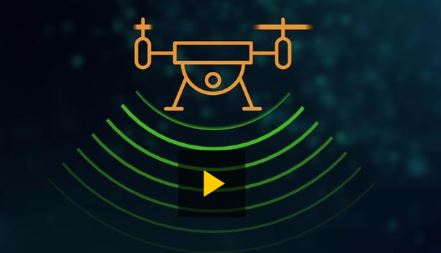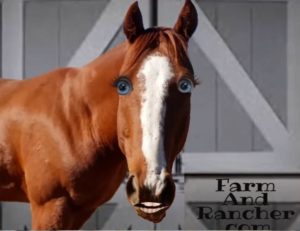 A cow lazily swishes its tail at a persistent buzzing, but the drone maintains its station hovering above the herd. The images it collects are analyzed with data from the animals and an array of sensors around the farm. A few miles away, the farmer acts on the information and decides to move the herd. Virtual gates open in an invisible fence and the drone emits a signal that stirs the animals into movement. Such futuristic cattle farming is not so far away.
A cow lazily swishes its tail at a persistent buzzing, but the drone maintains its station hovering above the herd. The images it collects are analyzed with data from the animals and an array of sensors around the farm. A few miles away, the farmer acts on the information and decides to move the herd. Virtual gates open in an invisible fence and the drone emits a signal that stirs the animals into movement. Such futuristic cattle farming is not so far away.
Farming animals for food raises complex questions. Livestock’s versatility makes them central to the survival of millions of people in marginal areas. Meat and dairy are excellent sources of protein, vitamins, and minerals, and when managed correctly livestock contribute to important ecosystem functions such as soil fertility. But there are concerns over the industry’s sustainability. Meat is a relatively inefficient way to produce calories. Livestock use up about 40% of global arable land to deliver 20% of human calorific intake: the ratio is 12 calories of chicken for every 100 calories of grain; beef is 3 to 100. However, while livestock consume around one third of all cereal production, 86% of their plant diet comes from grass, leaves, and other foods humans cannot eat. In this way, it’s argued, livestock positively contribute to food security by making the inedible, edible.
As the debate continues, so does demand. Over the last thirty years, meat and dairy consumption has tripled in low and middle-income countries, largely driven by rising prosperity and urbanization. This growth is on top of already enormous demand in developed nations: the average American consumes 222lbs of meat per year. With global demand forecast to increase a further 80% by 2030, this could place a severe strain on our ability to feed a growing population with earth’s limited agricultural land. The world’s 1.4 billion cattle, plus billions of pigs and chickens, already occupy two billion hectares of grasslands, of which some 700 million hectares could arguably be used more effectively to grow crops that can be eaten directly by humans. One potential solution, unless we all become vegetarians, is to make farmed animals more productive. The average farm animals may not be meeting their genetic potential when it comes to production; but techniques and technologies are being developed and deployed to close that gap and keep meat on the menu.
Farmers have always striven for efficiency. For millennia they have selectively bred animals to increase their inherent resilience and productivity: in the USA, dairy cows produce four times more milk than 75 years ago. With genome sequencing, artificial insemination, and embryo transfer, science could soon bring some animals to peak productivity. Supporting this is better nutrition, improving an animal’s conversion of feed into protein. Adding natural enzymes and organic acids increases the digestibility of feeds, enabling animals to draw more nutrition from a greater variety of poorer plants. It also supports a healthier gut making them less susceptible to disease. A growing understanding of animals’ precise nutritional needs is producing feeds tailored to optimize their energy, protein, and vitamins while improving overall wellbeing—better yields and healthier herds.
At the heart of most people’s vision of future farming is technology, and the drones, sensors, and wearables of precision farming all contribute to greater efficiency. Drones are increasingly used to monitor the health and productivity of both animals and the land they graze. Able to operate over vast swathes of difficult terrain, a drone fitted with infrared sensors and multi-spectrum, high-definition cameras can send real-time images of herds and flocks. This helps farmers to quickly and easily find lost animals, identify newborns, and diagnose sickness in herds and individual animals. Equally, drones show the condition of pasture, informing decisions on moving animals for food, water, or safety. It may even be possible to teach livestock to follow a drone like a high-tech, long-distance sheepdog.
Drones will be just one of many digital inputs feeding information back to the farmer. 3D cameras at water troughs can accurately assess an animal’s weight and carcass grade for optimum yield, while also identifying possible illness. Thermal imaging cameras in the cow shed can detect the inflammatory condition mastitis that reduces milk production, and camera systems in chicken sheds can monitor thousands of individual birds to spot the behavior changes associated with many poultry problems. Smart collars and wearables could one day monitor everything from fertility to health, with E-tags clipped to the ear constantly measuring body temperature while Bluetooth-enabled sweat strips send reports on sodium, potassium, and glucose levels. Even a cow’s breath can be analyzed for signs of nutritional problems. Armed with the ubiquitous smartphone, a farmer can use apps for on-the-spot diagnoses such as detecting metabolic diseases in cows and pigs from just a few snapshots.
Livestock farmers have been early adopters of robotics, and rapid advances are being made in everything from automatic feeders to herder bots. This technology is more than labor saving: automated milking robots enable cows to be milked according to their individual biorhythms, improving their health and yield. At the same time, robots are capturing vast amounts of information. All this digital data will synchronize with farm management software to provide the farmer with an overview of the health of a whole herd as well as specific actions for individual animals. An extension of this is cybernetic grazing that uses GPS and animal-mounted collars to measure the height of grass and move the herd to fresh pastures by opening and closing virtual fences defined by stimuli based on sight, sound, or shock.
Not all improvements are high-tech. Silvopastoral systems, where animals graze among shrubs and trees with edible leaves or fruits, produce more milk and meat as well as being better for the animals and environment. In Colombia, planting the shrub Leucaena with pasture grass increased protein by 64%, while elsewhere it is credited with higher milk production. One of the most radical possibilities for meeting our future needs is cellular agriculture – growing animal-based protein products from cells instead of animals. Growing meat in factories resembling breweries would cut out the need for feed, water, and medicines while freeing up valuable agricultural land. The science and the economics are still being worked out, but it could make a valuable contribution to meeting the challenge, since it seems that the desire for meat growing, not going away.
BY

 A cow lazily swishes its tail at a persistent buzzing, but the drone maintains its station hovering above the herd. The images it collects are analyzed with data from the animals and an array of sensors around the farm. A few miles away, the farmer acts on the information and decides to move the herd. Virtual gates open in an invisible fence and the drone emits a signal that stirs the animals into movement. Such futuristic cattle farming is not so far away.
A cow lazily swishes its tail at a persistent buzzing, but the drone maintains its station hovering above the herd. The images it collects are analyzed with data from the animals and an array of sensors around the farm. A few miles away, the farmer acts on the information and decides to move the herd. Virtual gates open in an invisible fence and the drone emits a signal that stirs the animals into movement. Such futuristic cattle farming is not so far away.




